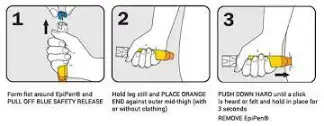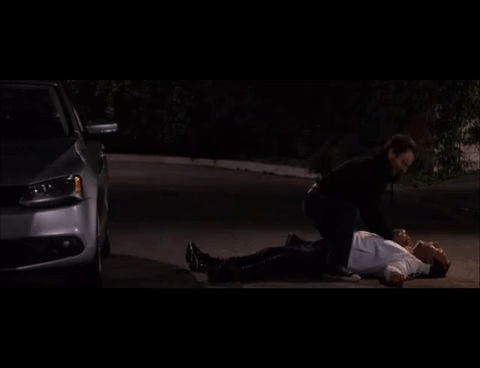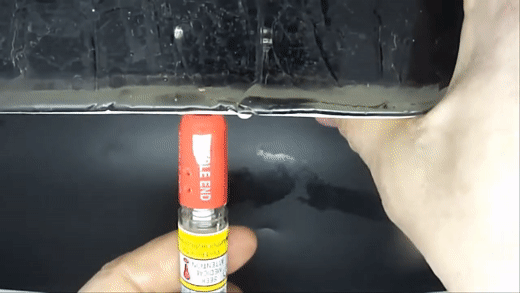Training and Assessment Delivered on Behalf of Allens Training Pty Ltd RTO 90909
Anaphylaxis: A Quick Guide To Dealing With It

You might not even know it but you’ve probably seen the word anaphylaxis before — when someone tells you that nuts, seafood or bee stings are a major trigger for them. An anaphylactic reaction is the most severe type of allergic reaction a person can get, so learning what to do if someone is having one is a big help.
In this article we’ll discuss the following about Anaphylaxis. Why does it happen? What is it like? How to treat it? We’ll also look at some common mistakes.
Why does it happen?
Why does a person have such a severe reaction to certain triggers? Our bodies immune system is designed to defend itself from things that attack the body. In the case of anaphylaxis, the body mistakes the food or sting we are allergic to as a parasitic infection, and starts to fight it.
And here’s where the problem is. The body overreacts, and starts attacking so hard, it doesn’t just fight the trigger but hurts the whole body. We could say it would be like a robber breaking into your house, and rather than calling the police, you just decide to burn the house down.

What are some things that could trigger Anaphylaxis?
Food: The main culprits are seafood, eggs, milk, wheat, nuts, sesame and soy.
Bites and Stings: bee’s, wasps, certain ants and ticks
Fun fact, or not so fun fact. Snake bites can hurt you not only from venom, but also an anaphylactic reaction
Medicine: Penicillin, Aspirin, herbal remedies and more can be a trigger.
Other: Latex can be a trigger, like rubber gloves and something else 😉 Even worse, exercise can at times trigger anaphylaxis.

What does anaphylaxis look like?
So when the body goes into overdrive the chemicals it releases cause inflammation. Your blood vessels widen to allow more blood to fight the “attacker.” This causes your blood pressure to rapidly drop which could cause dizziness and loss of consciousness.
This is what you’ll notice in a person experiencing anaphylaxis.
- Swelling and Redness in the face and tongue.
- Redness and itching around the eyes, nose, throat and mouth
- Difficulty breathing, wheezing, coughing and finding it hard to talk
- Abdominal pain and vomiting
- break outs of hives, welts and redness on the body
These sort of symptoms come on quickly, generally within around 20 minutes of a person being exposed to a trigger. If someone is exposed, what can you do?
Here’s how to Treat Anaphylaxis
First up, before treating a person with Anaphylaxis you’ll need to get them in the right position. Generally here are the two best options.
- If there breathing is ok. Lay them down flat. If unconscious, place them in the recovery position on their side. Laying down helps with blood circulation.
- If they are finding it hard to breathe, get them to sit up with their legs apart.
The main way Anaphylaxis is treated by first aiders is through adrenaline, or epinephrene. Adrenaline helps block the body from attacking itself and helps your blood flow get back to normal. Convenient, auto injecting pens are made to help get adrenaline in to the body. You might recognise brands such as epi-pen or ana-pen.
How do you use an epi-pen. It’s quite simple. It’s easy. There are just three steps.
- The pen has a blue safety. Pull it off the top.
- Form a fist around the pen and place the orange end against the outside of their mid thigh.
- Push down hard until you hear a click. Then make sure to hold it in place for three seconds.

Once you’ve done this, you should notice a very quick reversal of symptoms. If the person hasn’t improved within 5 minutes. You should use another epi-pen to treat them if one is available. Always call emergency services. The benefits of an epi-pen can wear of in 10-20 minutes so you’ll need their advanced care.
There are a few other things to keep in mind.
If a person is unconscious and not breathing, make sure to follow the DRSABCD action plan.
If a bite or sting has caused the problem, you’ll need to follow bite and sting first aid protocols to treat the bite or sting.
Anaphylaxis Action Plan
In Australia, ASCIA, the Australian Society of Clinical Immunology and Allergy produce an action plan template that Doctors will give to people with a history of Anaphylaxis. Here’s what that plan looks like. It will contain their name, details, triggers, and other treatment information. Where possible try to get that action plan and follow it when helping a person.

Common Epi-Pen Mistakes
When we run our first aid courses, there are a few common mistakes we see people make using an epi-pen. I could image they would be quite easy to make in reality, especially in the stress of an emergency.
Here’s some things to look out for:
Stabbing Motion
So rather than holding the epi-pen to the outside of the thigh and pressing in. It can be easy to go for a run up and use a stabbing motion.
This is not a good idea. It’s unneccesary. The person could get hurt. Even worse, they may flinch and you might miss. Gentle hands please.

Taking it out too quickly
When using an Epi-Pen, it’s often easy to push it in and immediately pull it out rather than waiting the required three seconds. This is bad. If you pull it out immediately the adrenaline won’t enter their system.
An epi-pen can only be used once, so in effect you’ll have wasted the dosage. It can often be hard to find a second epi-pen so make sure that you make it count

Not supporting the Knee
If a child or adult has used an epi-pen before they know it can hurt. This could cause them to flinch or move about when we treat them. So at our first aid courses, we teach people to hold the knee to keep the leg in place while we inject them. Here’s a picture of what happened when one person used a stabbing motion and their child moved their leg. Ouch!

Wrong End
Take a look at the gif below where someone has ejected an epi-pen into some gelatine. That’s a lot of needle, and a lot of force quick. So you don’t want to put your thumb over the orange part of the epi-pen and have all that going through your finger. Ouch!
You’ll want to make sure to hold the epi-pen with your fist around the pen as shown earlier. Not only will it stop mishaps like this, but make your aim and pressure will be better.

Wrap-Up
Anaphylaxis is a serious medical condition, and because of this it can be hard to deal with. The information and advice in this article should help you get through an encounter with Anaphylaxis and hopefully make the next one less uncomfortable for yourself or your loved ones.


